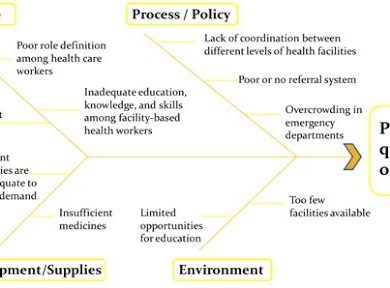
Quality in Six: Unlocking the Secrets of Excellence!
Quality in Six is a revolutionary approach to achieving excellence in any field. It is a comprehensive framework that guides organizations on how to develop sustainable systems that enhance quality, productivity, and profitability. Quality in Six is based on six fundamental principles that provide a common language, tools, and techniques for driving continuous improvement. In this article, we explore the six steps to success and how to master the art of excellence with Quality in Six.
“Six Steps to Success: Discovering the Magic of Quality!”
Step 1: Define – The first step is to define the problem or opportunity that requires improvement. This involves identifying the customer’s needs and expectations, gathering data, and defining the project scope. A clear definition sets the foundation for quality improvement efforts.
Step 2: Measure – The second step is to measure the current state of the process or system. This involves collecting data, creating process maps, and analyzing the root cause of problems. The aim is to understand the current performance and identify the gaps between the current and desired state.
Step 3: Analyze – The third step is to analyze the data and identify the factors that contribute to the problem. This involves using statistical tools, such as Pareto charts, fishbone diagrams, and hypothesis testing, to identify the root causes of defects or inefficiencies.
Step 4: Improve – The fourth step is to develop and implement solutions that address the root causes of the problem. This involves brainstorming, piloting, and testing potential solutions, and selecting the most effective ones. The aim is to implement sustainable changes that eliminate the root causes of defects or inefficiencies.
Step 5: Control – The fifth step is to monitor and control the process to ensure that the improvements are sustained. This involves implementing standard operating procedures, developing control plans, and monitoring key performance indicators. The aim is to maintain the gains achieved and prevent the recurrence of problems.
Step 6: Sustain – The final step is to embed the improvements into the culture and systems of the organization. This involves developing training programs, recognition systems, and continuous improvement plans. The aim is to create a culture of excellence that drives continuous improvement.
“Master the Art of Excellence with Quality in Six!”
Quality in Six provides a comprehensive framework for organizations to excel in any field. By mastering the six steps, organizations can achieve sustainable excellence and create a competitive advantage. The key to success is to develop a culture of continuous improvement, where everyone is committed to enhancing quality, productivity, and customer satisfaction.
To master the art of excellence with Quality in Six, organizations need to focus on the following strategies:
- Leadership: Leaders set the tone for excellence by modeling the behavior and values that drive quality improvement. Leaders need to communicate the vision, create a sense of urgency, and provide the resources and support needed for success.
- Engagement: Engaged employees are the key to quality improvement. Organizations need to involve employees in the improvement process, provide training and development opportunities, and recognize and reward their contributions.
- Innovation: Innovation drives quality improvement by challenging the status quo and identifying new and better ways to do things. Organizations need to foster a culture of innovation, where employees are encouraged to experiment, take risks, and learn from failures.
In conclusion, Quality in Six provides a roadmap for organizations to achieve sustainable excellence. By mastering the six steps and focusing on leadership, engagement, and innovation, organizations can create a culture of continuous improvement that drives quality, productivity, and profitability. The magic of quality lies in the commitment and passion of people who strive to make a difference and achieve their full potential.



No Comment